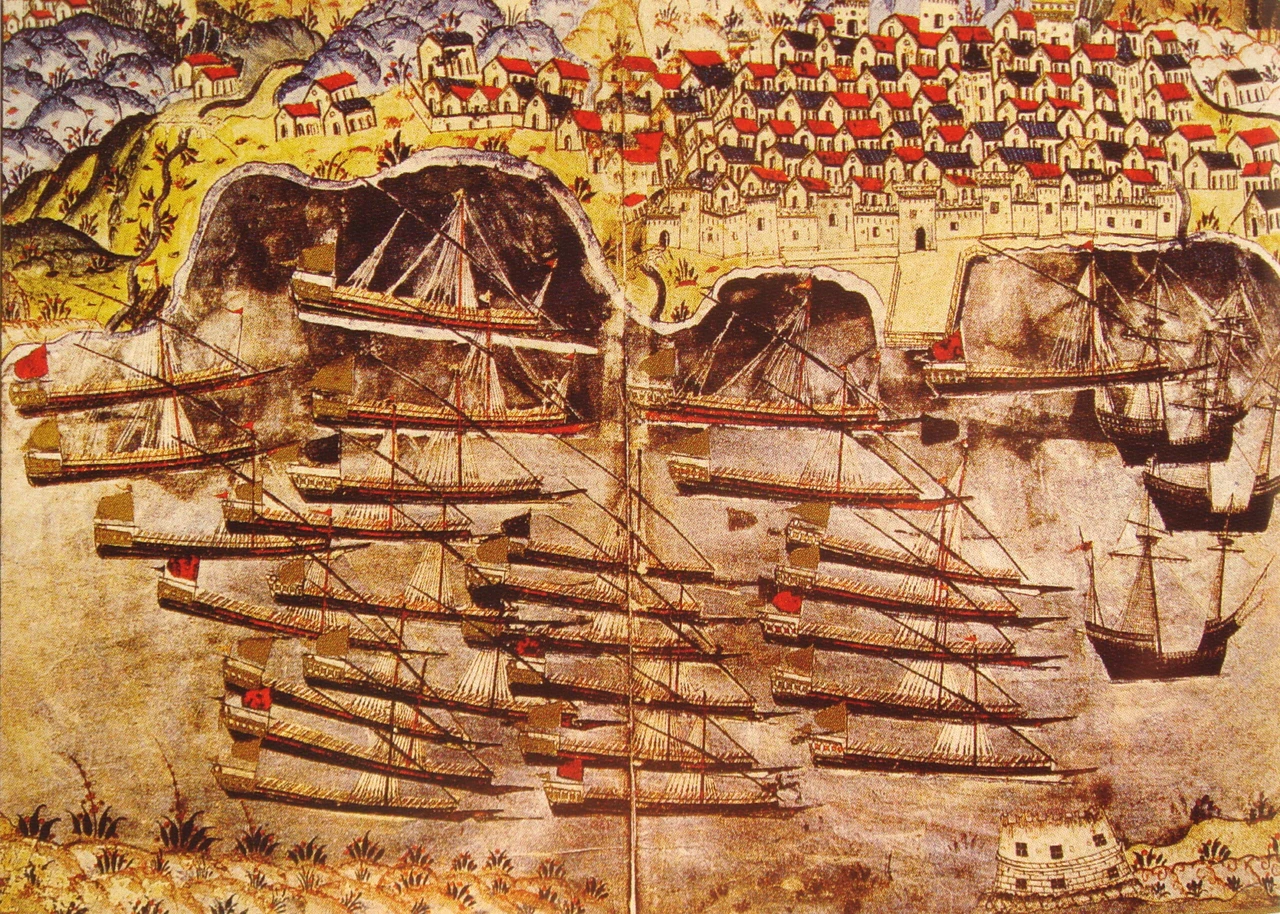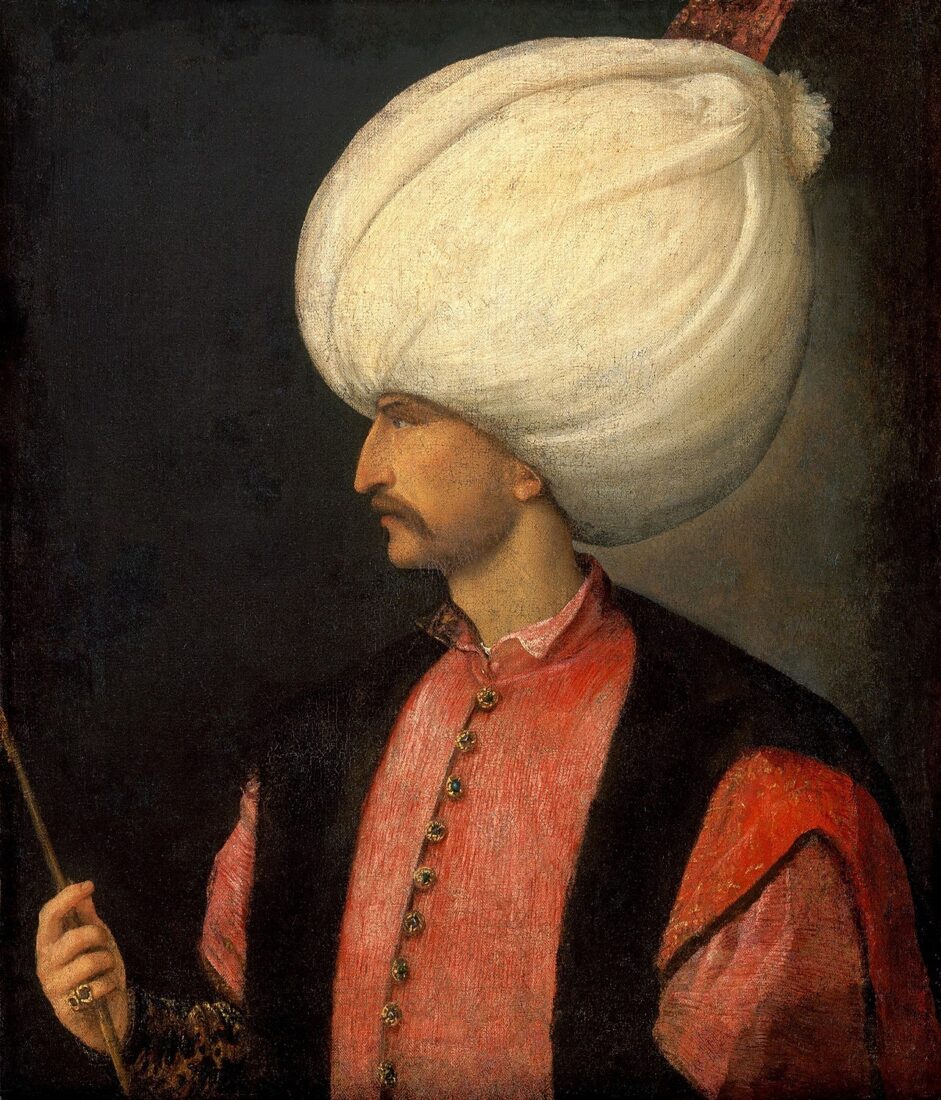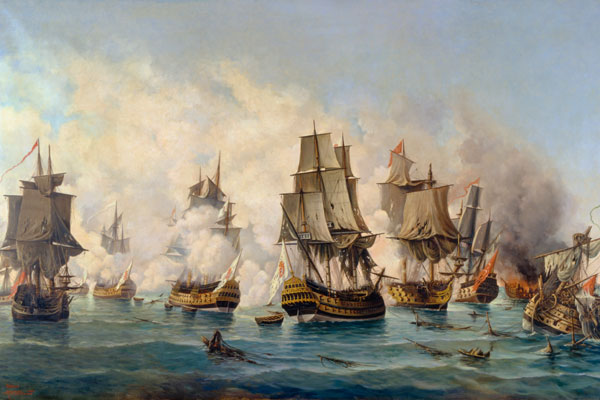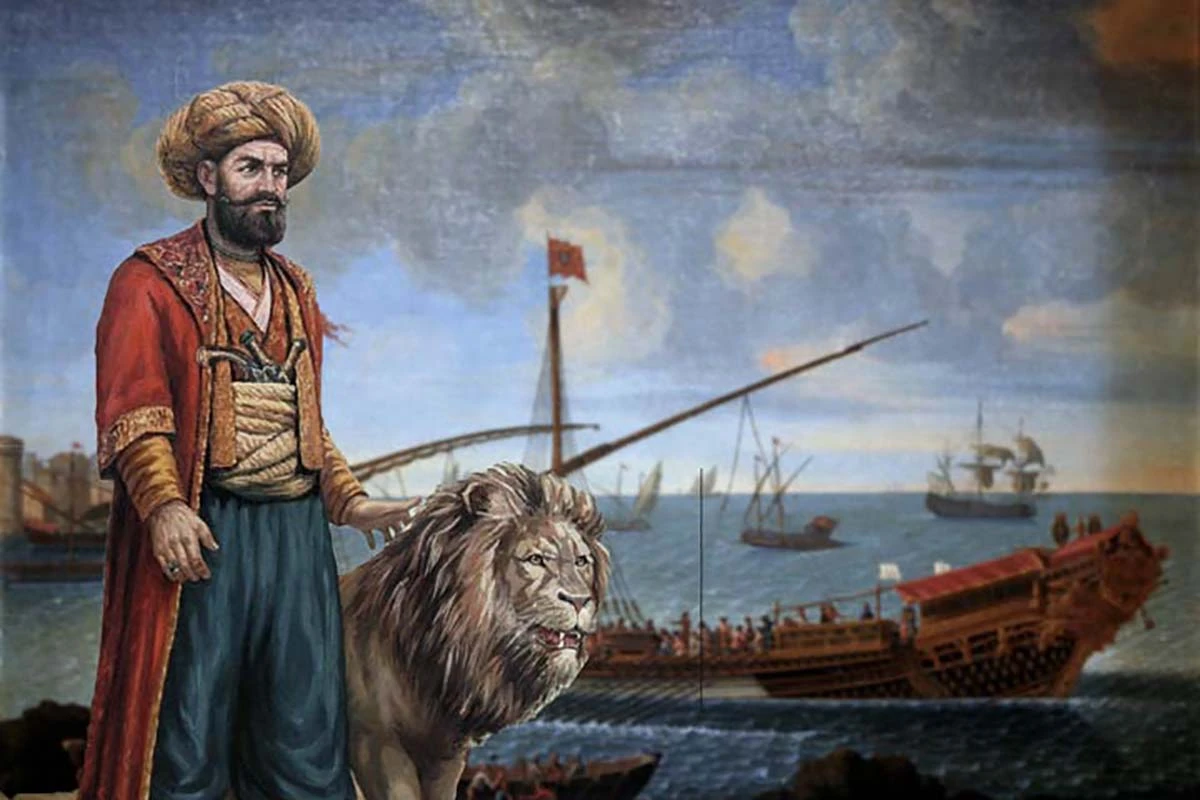Unveiling Ottoman ‘Fine Navy’ during Suleiman I era
 Miniature showing the Ottoman navy wintering in Toulon, France in winter of 1543 (By Matrakci Nasuh)
Miniature showing the Ottoman navy wintering in Toulon, France in winter of 1543 (By Matrakci Nasuh)
Ottoman Empire reached the shores of the Marmara Sea with the conquest of Karamursel (Modern Izmit) in 1323 and gained its first maritime experience there.
During the reign of Bayezid I, the Ottomans were introduced to the Aegean Sea, which provided them with the opportunity to venture into the open seas. By the mid-16th century, the Ottomans had become the dominant power in the Mediterranean thanks to Muslim corsairs and European navigators.

Under Sultan Suleiman (1520-1566), the Ottoman naval power developed an effective strategy not only in large seas but also in shallow waters such as rivers and lakes. The Ince Donanma (Thin Navy) emerged as an important but less recognized component of Ottoman naval operations.

What was Ince Donanma?
The Ince Donanma was a naval force composed of small-sized boats used in shallow waters like rivers and lakes. This fleet was used for various purposes including logistics, reconnaissance, patrolling, combat, and communication, ensuring Ottoman control in strategic regions like the Danube River. The Ince Donanma was divided into various regional commands such as the Danube, Euphrates, Tigris and Nile Commands.
Danube command in Ince Donanma
The Danube Command was the most important unit of the Ince Donanma. This command, which provided access to the interior of Europe, was divided into two commodores after the conquest of Hungary.
The first commodore controlled from the point where the Danube River meets the Black Sea to Vidin, while the second commodore managed from Vidin to Buda. The Danube Captain, residing in Silistra, inspected the vessels. This command played a crucial role in transportation, security, and logistics within Hungarian territories.
Euphrates (Shatt) Command in the Ince Donanma
The Euphrates Command covered an approximately 1300-kilometer waterway stretching between Shatt al-Arab and Birecik, Sanliurfa.
In 1565, this command, comprising around 300 vessels, was responsible for regional security, maintaining the continuity of trade with India, and providing logistical support in wars with the Safavids.
Tigris (Shatt-Basra) Command in the Ince Donanma
During Sultan Suleiman’s reign, there were about 200 ships on the Tigris River. While “kelek” rafts were used from Diyarbakir to Mosul, small flat-bottomed boats were employed between Baghdad and Basra. The Tigris Command undertook important tasks such as transporting war materials and creating convoys to protect against tribal attacks in the region.
Nile Command in Ince Donanma
Established after the conquest of Egypt by Selim I, the Nile Command ensured the safety of the busy commercial traffic on the Nile River.
Its first commander was Aydin Reis, and this command controlled the commercial traffic in the broad expanse of the Nile River.
Types of vessels used in Ince Donanma
The Ince Donanma used various types of vessels suited to their specific functions. These included Aktarma, Brolik, Akabe, Kiyase, Cerim, Girab, Topceker Ship, Kancabas, Karamursel, Sayka, Kirlangic, Uskuna, Sehtiye, Camlica Boat, Salopa, Sahtur, Perkende, Brik, Firkate, Kalite, Ates Kayigi, Navi, Ustuacik, At Kayigi, Tonbaz, Duba, Kelek, Filika, Sandal, Piyade Kayigi, Kotra, Kik, Gambot, Gulet, Iskampavya, Pink, Mistika, Galyot, Gec Kayigi, Ucurma, Zarbona, Cernik Kayigi, Avizo, Salapurya, Gabar, and Tas Gemisi.
Importance of Ince Donanma in Conquest of Belgrade
When Sultan Suleiman ascended the throne in 1520, he directed the expansion of the Ottoman Empire toward the West. The conquest of Belgrade was strategically significant for the Ottoman army’s campaigns into Hungary.
The Ince Donanma played a crucial role in this campaign by supporting the land forces with ships that put pressure on fortresses and castles along the Danube River. The fall of Belgrade was an important step in the Ottoman Empire’s northern expansion.
Importance of Ince Donanma in Conquest of Buda
The conquest of Buda was of great importance for the complete control of the Danube River by the Ottoman Empire. After the Battle of Mohács, the Ince Donanma provided significant logistical and military support to the Ottoman army on the Danube River.
During Sultan Suleiman’s reign, the Ottoman naval power demonstrated its effectiveness not only in large seas but also in rivers and lakes. The Ince Donanma, an important yet overshadowed part of Ottoman naval operations, made significant contributions to the empire’s expansion policies.



